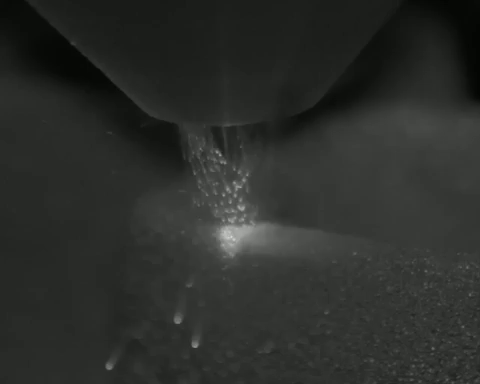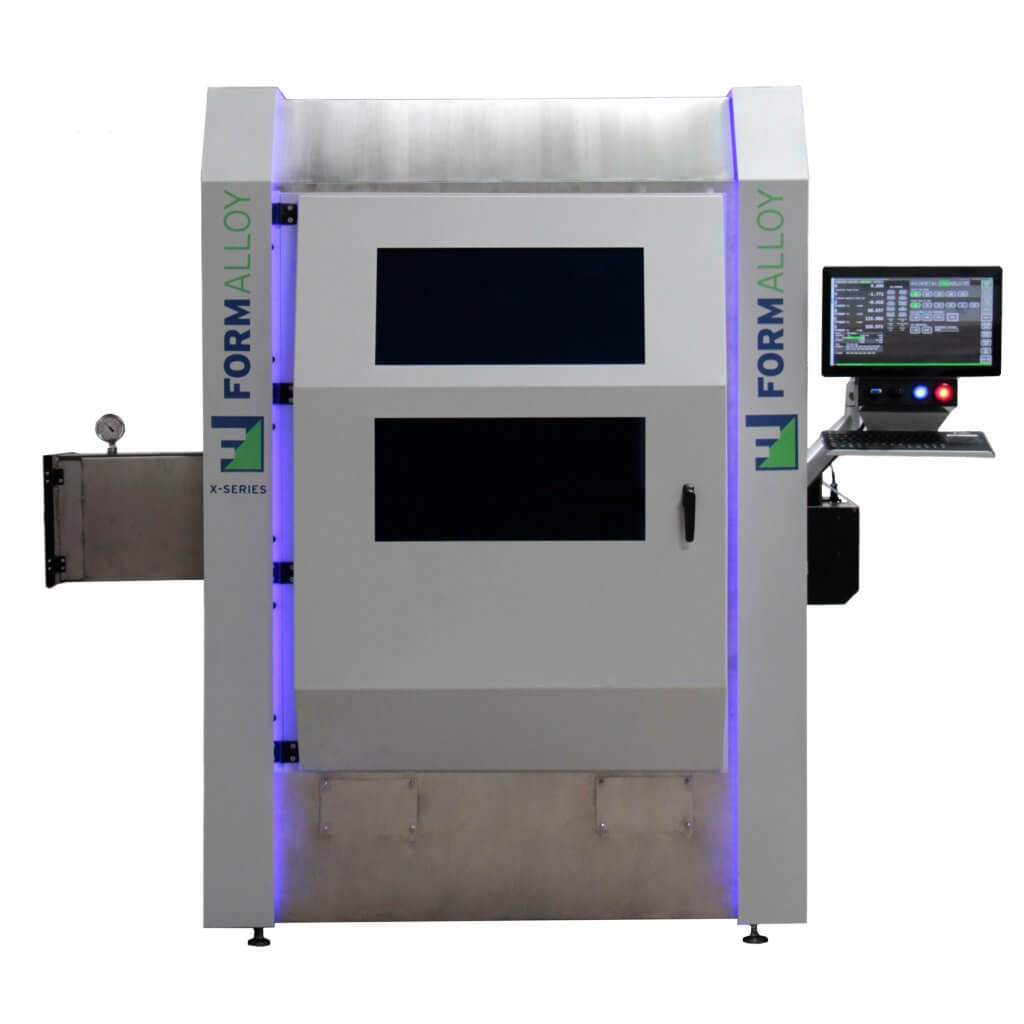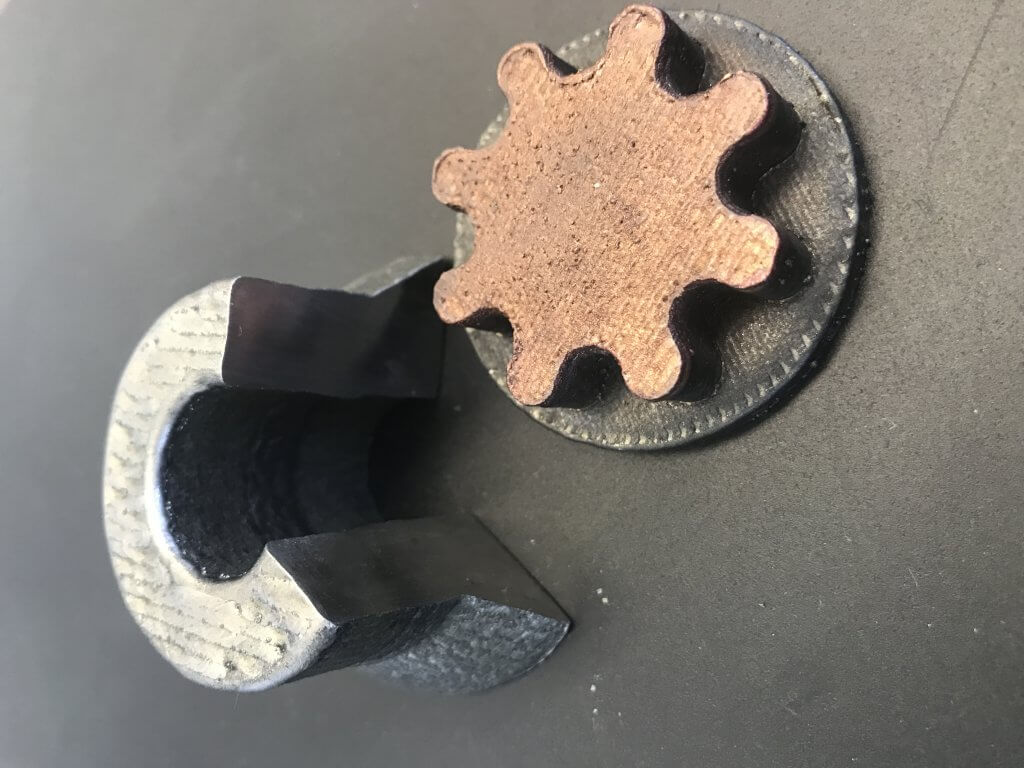When I met Melanie Lang at RAPID a lot of the buzz on the show floor was directed at her startup Formalloy. Formalloy has developed a metal deposition head that uses Laser Metal Deposition (also called DED) to deposit metal for large parts relatively quickly for 3D printing. These kinds of heads and laser cladding systems converted to 3D printing as well as other Directed Energy Deposition technologies can be used to make large structural parts. The aerospace industry is increasingly looking to make parts such as wing spars or aerostructures using these technologies. Indeed some electron beam welding technologies were first developed for the Shuttle program and other defense programs and later converted to 3D technologies. The reason that ORNL and Sandia are commercializing so many new 3D printing technologies is that behind closed doors the value of 3D printing larger than expected structures has already been well demonstrated. Drones, satellites, and radar are just some of the areas where metal printing plays a cutting edge role. With DMLS (PBF) limited to smaller parts rougher DED technologies are key to unlocking larger components for 3D printing. At the same time they can be used to process novel materials and be used to repair worn components. Formalloy is taking on established DED companies such as Sciaky, Optomec and Trumpf in that market for making 3D metal components of a meter or larger in size.

What really interests me about Melanie is that she came to 3D printing from the user side. In her 12 years at Lockheed, she was a Project Engineer, Systems Engineer, Project Manager, and Program Manager. This means that she comes to the 3D printing world as someone who has a solid technical background and who approached 3D printing not with stars in her eyes but rather with an engineer’s cool gaze. A startup grounded in technology that wants to make manufacturing a reality for metals including magnetics, metal matrix composites, superalloys and gradient parts is just what 3D printing needs. We interviewed Melanie to find out more.
What is Formalloy?
Formalloy is a metal additive manufacturing technology company that is specializes in the design, research, development, production and integration of directed energy deposition systems and components.
What do you do differently than other DED companies?
Formalloy is vertically integrated – we design and manufacture the components in-house which are optimized for the DED process. As a result, Formalloy systems can deposit high-quality components with 90%+ powder efficiency and rapid speeds up to 15 lbs/hr. Formalloy systems can process the most comprehensive alloys on the market from nickel super alloys to copper alloys, titanium, magnetics, and bi-metallic/gradient materials.

What kinds of materials are people using with your technology?
-
Multi-metals/Gradients
-
Copper alloys
-
Carbides
-
Magnetics
-
Silicon
-
Titanium
-
Tool steels
-
Nickel alloys
-
Cobalt alloys
-
Iron alloys
What kinds of applications are you seeing?
DED is the most versatile metal AM technologies enables diverse applications to include:
Additive Manufacturing
- Complex Geometries
- High Value Materials
- Tooling
Cladding
Resistant Materials
Repair
- Manufacturing Defects
- Wear
Research
-
Alloy Development
-
Gradient/Multi-Materials
So you can do gradient parts?
Formalloy has extensive gradient and bi-metallic part experience, and have provided systems that are used for gradient parts. For example, rocket nozzle components made of nickel super alloys and copper alloys are of particular interest to the aerospace sector.

What kinds of customers do you have?
Formalloy works with Fortune 500 companies, government agencies, research institutes, universities, and small businesses alike!
What excites you about 3D printing?
I am most excited about 3D printing truly re-defining what is possible from a manufacturing standpoint – complex geometries and gradient and exotic materials are expanding the design envelope and providing components with superior properties.
What are some of the limitations of 3D printing?
Many of the materials being used for 3D printing were developed decades, if not centuries ago. There is a strong need for the development of new alloys that are optimized for the AM processes to increase printing speed and enhance material properties.
How large can parts be with your technology?
Our systems are offered up to 1mx1mx1m, and we offer OEM solutions to enable robotic integration for very large parts that exceed the standard build volume size.

Can we make things like wing spars?
The technology can both make and repair manufacturing defects for large components such as wing spars, however uncertainty exists over standards and qualification of parts for components such as wing spars with DED.
How does the machine help with QA?
In process monitoring, control, and data logging is integrated to ensure quality and repeatability.
How does the machine monitor builds?
In-situ monitoring includes melt pool temperature, melt pool size, and laser power, which can be monitored and controlled in closed-loop. In addition, a laser profilometer is integrated to scan each layer after deposition and create a topographical map of the single layer, a technology Formalloy calls Dynamic Layer Selection.
What kinds of alloys are you very excited about?
With the recent release of the Formalloy ADF – Alloy Development Feeder, I am most excited about rapid development of alloys that are optimized for the DED process, that results in faster deposition and superior material properties as compared to the legacy alloys used today.
Subscribe to Our Email Newsletter
Stay up-to-date on all the latest news from the 3D printing industry and receive information and offers from third party vendors.
Print Services
Upload your 3D Models and get them printed quickly and efficiently.
You May Also Like
The Dental Additive Manufacturing Market Could Nearly Double by 2033, According to AM Research
According to an AM Research report from 2024, the medical device industry, specifically in dentistry, prosthetics, and audiology, is expected to see significant growth as these segments continue to benefit from...
Heating Up: 3D Systems’ Scott Green Discusses 3D Printing’s Potential in the Data Center Industry
The relentless rise of NVIDIA, the steadily increasing pledges of major private and public investments in national infrastructure projects around the world, and the general cultural obsession with AI have...
AM Research Webinar Explores Continuum’s Sustainable Metal Additive Manufacturing Powders
Metal additive manufacturing (AM) powder supplier Continuum Powders is working to develop solutions that empower industries to reduce waste and optimize their resources. An independent life cycle assessment (LCA) of...
3D Printed Footwear Startup Koobz Lands $7.2M in Seed Round
California-based Koobz is focused on reshoring the U.S. footwear supply chain with advanced manufacturing processes, including 3D printing. The startup just announced that it has added $6 million to its...
































